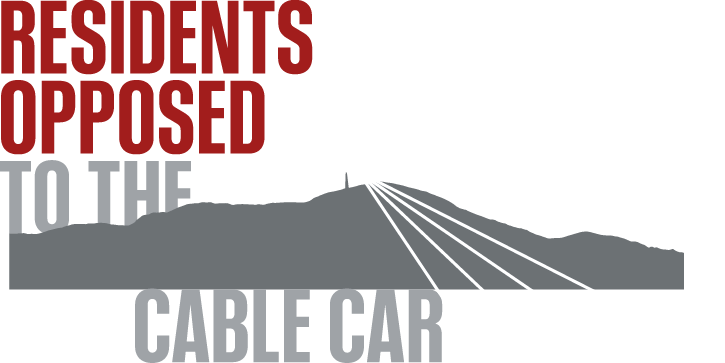TASCAT decision should be the end of a kunanyi cable car
Residents Opposed to the Cable Car (ROCC) has welcomed today’s decision of Tasmania’s planning tribunal to refuse a permit for the development of a cable car on kunanyi/Mt Wellington, and thanks the many thousands of people who have joined the campaign to protect kunanyi, donated or made formal submissions.
In the wake of this decision, it is clear the developer has an obligation to abandon its proposal and leave the Mountain cable car-free.
“We’re relieved that this decision is yet another comprehensive rejection of the cable car and thankful to the thousands of people who have stood up for kunanyi, donated to our legal fund and cared enough to take action to protect what is such a special place for so many,” said Vica Bayley, spokesperson for ROCC.
“This is a clear signal to the proponent, its shareholders and supporters to give up on their vision to privatise the summit of the mountain and abandon this, or any alternative cable car development.
“This saga has cost the community dearly – in time, energy, cohesion and money, and it is time it ended. The developer is the only one that can do that and the onus is on it to accept this decision and allow the community to move on.”
The decision confirms 18 grounds of non-compliance with management and planning provisions, spanning noise and visual impact, geoheritage and biodiversity.
“This is a comprehensive, formal rejection of a development that has never had a social license.”
“This is the eighth incarnation of a cable car on kunanyi and the only one to make to a development application. All have been vigorously opposed by the community and we acknowledge both campaigns past, and colleagues present. This includes our legal team, expert witnesses, other joined parties, Hobart City Councillors and Greens representatives in State and Federal Parliament.”
Key statements from the tribunal decision include:
- 215 – the Appellant has failed to adequately demonstrate either a significant long term economic community benefit or a significant long term social community benefit.
- 229 – Therefore the long term impact on vegetation values, insofar that they form habitat for threatened species will not be remedied.
- 260 – Construction of the pinnacle centre would result in long term or permanent changes to, and loss of visibility of landform features.
- 342 – The loss (visual amenity) is demonstrated by the manner in which tower 3 and the cables (with or without cable cars) project from the landform above the Organ Pipes escarpment and the cables traverse over the face of the Organ Pipes from a wide range of public and well-used locations.
- 354 – The form, scale, design and location of the pinnacle centre does not harmonise with the site.
